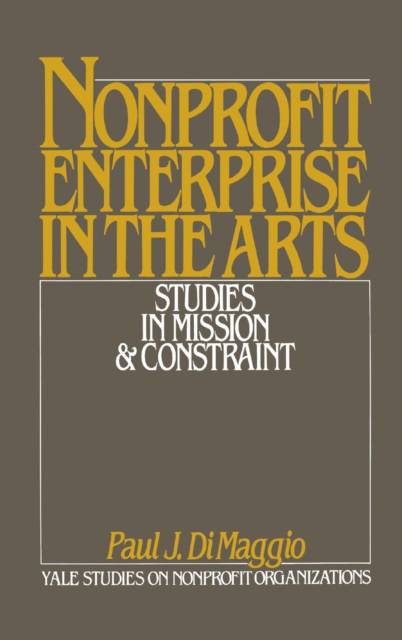
- Afhalen na 1 uur in een winkel met voorraad
- Gratis thuislevering in België vanaf € 30
- Ruim aanbod met 7 miljoen producten
- Afhalen na 1 uur in een winkel met voorraad
- Gratis thuislevering in België vanaf € 30
- Ruim aanbod met 7 miljoen producten
Zoeken
Nonprofit Enterprise in the Arts
Studies in Mission & Constraint
€ 354,45
+ 708 punten
Omschrijving
Taking the dichotomy of nonprofit "high culture" and for-profit "popular culture" into consideration, this volume assesses the relationship between social purpose in the arts and industrial organization. DiMaggio brings together some of the best works in several disciplines that focus on the significance of the nonprofit form for our cultural industries, the ways in which nonprofit arts organizations are financed, and the constraints that patterns of funding place on the missions that artists and trustees may wish to pursue. Showing how the production and distribution of art are organized in the United States, the book delineates the differing roles of nonprofit organizations, proprietary firms, and government agencies. In doing so, it brings to the surface some of the special tensions that beset arts management and policy, the way the arts are changing or are likely to change, and the policy alternatives "high culture" faces.
Specificaties
Betrokkenen
- Uitgeverij:
Inhoud
- Aantal bladzijden:
- 386
- Taal:
- Engels
- Reeks:
Eigenschappen
- Productcode (EAN):
- 9780195040630
- Verschijningsdatum:
- 15/01/1987
- Uitvoering:
- Hardcover
- Formaat:
- Genaaid
- Afmetingen:
- 158 mm x 238 mm
- Gewicht:
- 721 g

Alleen bij Standaard Boekhandel
+ 708 punten op je klantenkaart van Standaard Boekhandel
Beoordelingen
We publiceren alleen reviews die voldoen aan de voorwaarden voor reviews. Bekijk onze voorwaarden voor reviews.










